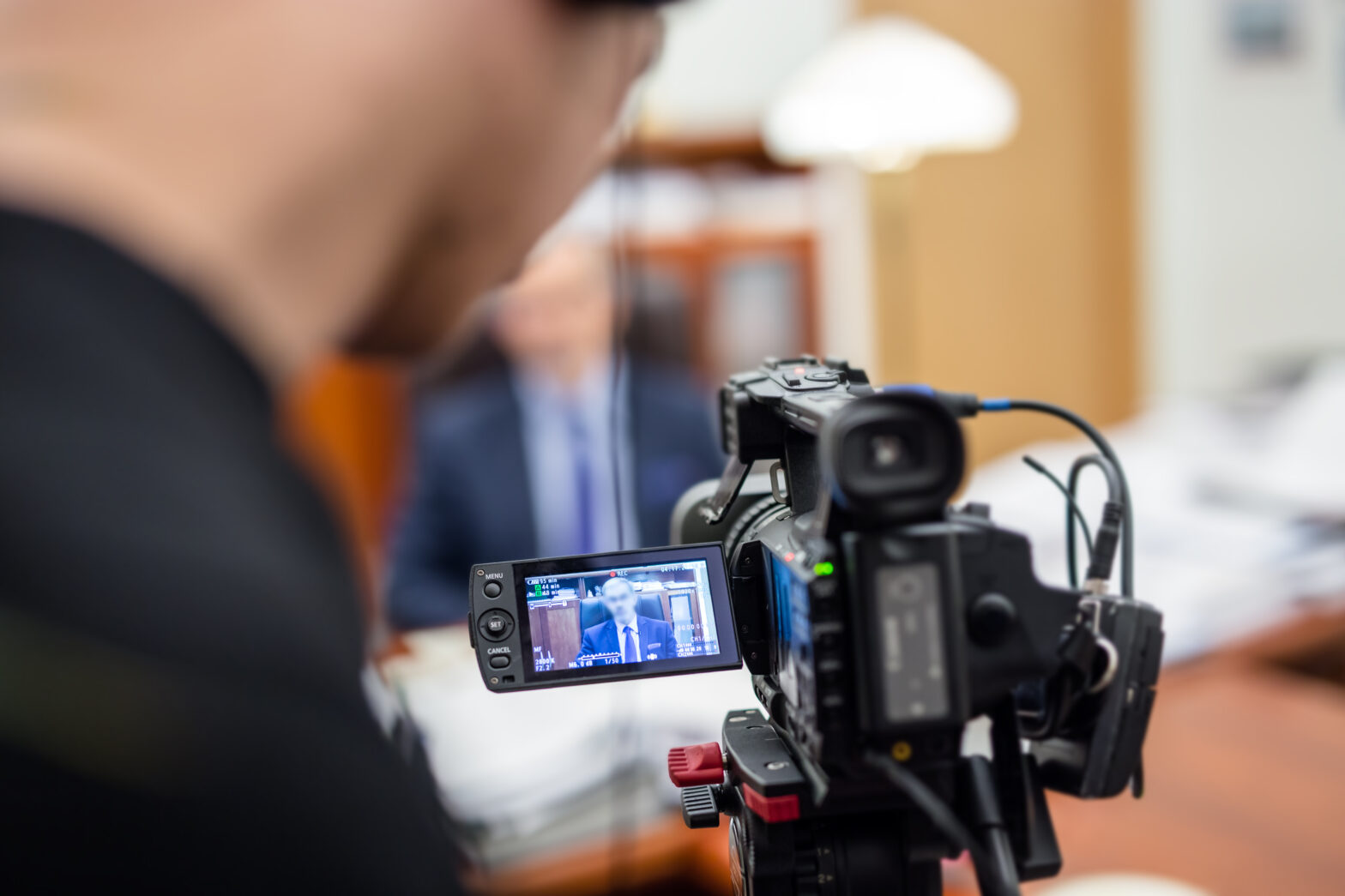TV news increasingly favours the ‘down the line’ interview because there are so many advantages for the media outlet. A ‘down the line’ interview is conducted remotely where the interviewee cannot see the interviewer but can hear the questions being asked through an earpiece (hence down the line). ‘Down the line’ interviews can be live on site or pre-recorded in a purpose based studio.
It’s relatively cheap, it can be recorded off air and clipped for later bulletins, it can be recorded from another newsroom via a local radio station or on the end of a satellite link, but mainly it gives the studio based presenter an active role in proceedings rather than just reading links into pre-recorded packages.
The main advantages of a ‘down the line’ interview is that:
- It’s a short interview.
- It’s likely you’ll get all of it used.
- You get direct access to your audience.
- You seize back editorial control.
When you first get invited to a ‘down the line’ interview you may be a little apprehensive if you’ve not done one before, but if you follow these basic tips you’ll be fine.
1. Look at the camera
It may sound obvious but the rules of TV interviews are these: if you can see the person asking the questions, only look at them. If you can’t see the person asking the questions, only look at the camera. In any contribution studio there will probably be a monitor so that you can see the programme you are about to appear on go live to air. This may be a distraction.
When you’re on the television you’ll pop up on the monitor and it takes an iron will not to be drawn to look at yourself. You need to hear the questions, you need to hear the programme as it goes out before you as you may well be being interviewed about the contents of the news item before you. But you only need to hear these things. Get the vision on the monitor turned off so you can concentrate on looking straight down the camera.
2. The camera is always on
Golden top tip number two is to remember the camera, and microphones, are always on and they’re always on you. Think Sky News with the video wall. The presenter is stood in front of it and you’re about to be interviewed. The audience can see you! Even before the interview starts.
And don’t think that when they’re asking you a question the audience can only see the presenter. No. The director can choose to show the interviewer, you, or both of you. So, don’t grimace in reaction to a question! And when you think the interview is over stay put and keep looking at the camera. It’s not over until someone tells you that you are ‘clear’.
3. Keep to the point
If you are going live (see the next top tip) you may have two minutes on air, but that’s little more than three or four questions and responses. So don’t try to say too much. A TV audience isn’t necessarily paying complete attention to you, however interesting you are. Remember a TV interview is no place to try to win an argument. There’s no time for that. It’s just a place to put your position.
So, before the interview think of the one or two most important things you have to say and keep reworking those big ideas. Two big ideas and a reason to believe you. The interview will go out live to people who will be eating dinner, shouting at the kids, tying up shoelaces – whatever. They’ll not be sitting bolt upright taking notes on what you say. To make sure the audience takes away what’s important to you, you need to keep reworking those two big ideas.
4. Live vs recorded
If your interview is recorded then they may only take 15 or 20 seconds as a clip for their story, even if the interview goes on for three minutes. So, don’t try to say too much. The advantages of opting for a recorded interview if you have the choice are: if you make a mess, ask to do it again; pause before you reply so that you get your big ideas across consistently.
If there’s an inaccuracy in the question or it’s not something you are qualified to talk about, simply stop the interview and put them right. The advantages of live interviews: it’s a short interview so three or four responses will pretty much cover the time; you get all of it used; you have direct access to the audience and so have editorial control over what that audience hears. The disadvantage of live interview – well, you’re live on TV!
5. Bring your biggest personality
When you pop up on TV during your interview you will be, in effect, in a little box. All the audience has to relate to is your face and your words. So, bring the biggest, brightest, most authoritative version of you that you can muster. This is not a presentation or a performance as such. You are not there to declaim to the audience. For the audience to believe and invest in what you’re saying you need to at least sound as if you mean every word you’re saying. You must also bring conviction to what you say. Perception is reality. If the audience doesn’t think you are 100 per cent committed to what you are saying, why should they believe you?
So, there you are, five top tips when giving a “down the line” interview. Now, get out there and do it! It’s the only way to get good at them. And if you are good at them then broadcasters will come back to you again. TV news needs bright, engaging interviewees.





